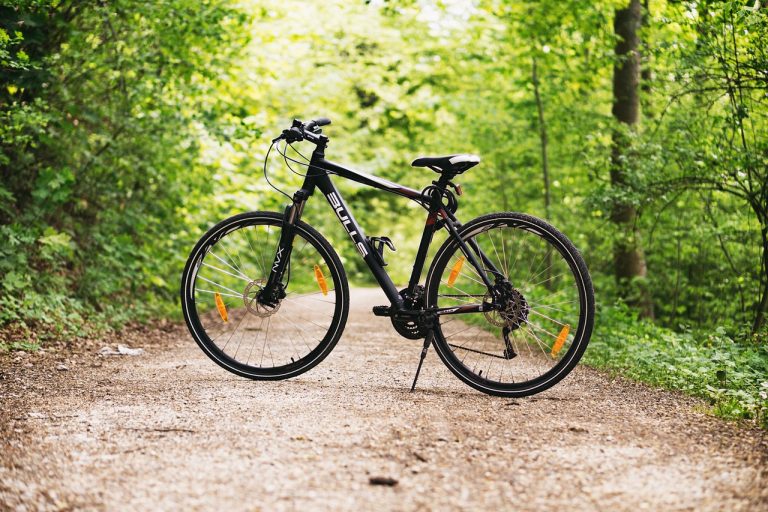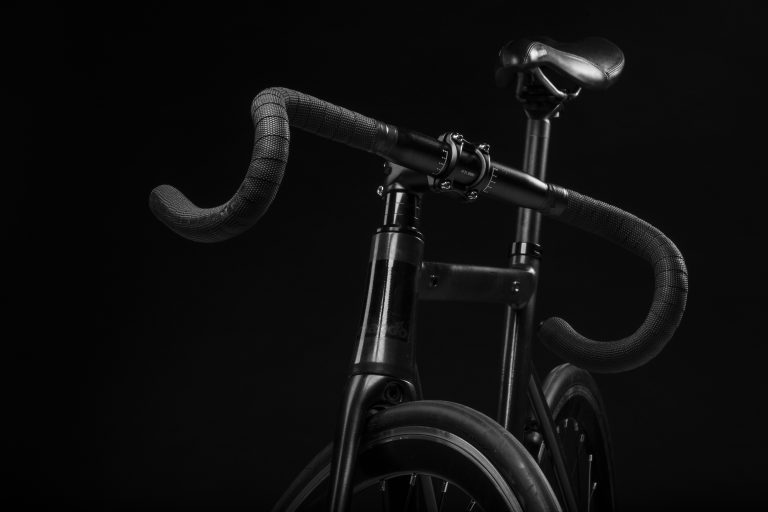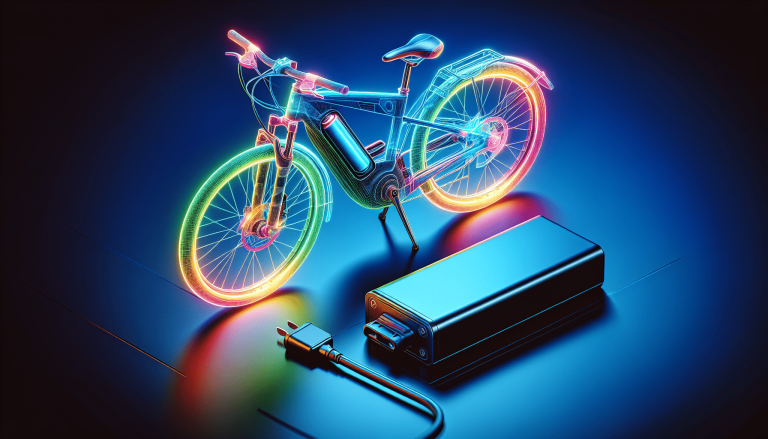Can A Beginner Ride An Electric Bike?
Thinking about trying out electric bikes but worried that you might not have the experience to handle one? Well, fret not! This article explores the exciting world of electric bikes and addresses the burning question on every beginner’s mind: can you ride an electric bike even if you’re new to cycling? Discover how electric bikes offer a convenient and thrilling alternative for beginners who want to embrace two-wheel adventures without breaking a sweat. Get ready to experience the joy of effortless biking while exploring the world around you. So, fasten your helmet and let’s explore the streets on an electric bike ride like no other!
Choosing the Right Electric Bike
Consider the Rider’s Experience and Skill Level
When it comes to choosing the right electric bike, it’s important to consider the rider’s experience and skill level. Electric bikes come in a variety of styles, from beginner-friendly models to more advanced options. For someone who has never ridden a bike before, it may be best to start with a bike that has a lower power output and simpler controls. On the other hand, if you have some experience with riding, you may feel more comfortable with a bike that offers more power and features.
Understanding Different Types of Electric Bikes
Electric bikes come in various types, each designed for different purposes. It’s essential to understand the distinctions between these types to make an informed decision. Some common types include:
- City and Commuter Bikes: These bikes are designed for urban environments and are ideal for commuting or running errands.
- Mountain Bikes: If you enjoy off-road adventures, a mountain bike with electric assistance may be the right choice for you.
- Folding Bikes: Perfect for those with limited storage space or frequent travelers, folding bikes are compact and easy to transport.
- Cargo Bikes: For those who need to carry heavy loads or transport children, cargo bikes are a practical option.
- Road Bikes: If you’re primarily focused on speed and long-distance riding, a road bike with electric power can enhance your experience.
By understanding the different types of electric bikes available, you can select one that suits your specific needs and preferences.
Factors to Consider When Choosing an Electric Bike
When choosing an electric bike, there are several factors to consider to ensure the best fit for your needs. These factors include:
- Range: The range of an electric bike refers to how far it can travel on a single charge. Consider the distance you plan to travel and choose a bike with a range that meets your requirements.
- Terrain: If you frequently ride on hilly terrains or rough paths, you’ll want to opt for a bike with stronger motor power and a robust suspension system.
- Weight Capacity: Different bikes have varying weight capacities, so it’s essential to choose one that can comfortably support your weight and any additional loads you may carry.
- Comfort: Pay attention to the bike’s frame design, saddle, and handlebars as these factors contribute to your overall comfort while riding.
- Budget: Electric bikes can vary significantly in price, so it’s crucial to set a budget and choose a bike within that range.
By taking these factors into account, you can make an informed decision and select the electric bike that best suits your needs and preferences.
Choosing the Right Size and Fit
To ensure a comfortable and safe riding experience, it’s important to choose the right size and fit for your electric bike. Electric bikes typically come in different frame sizes, and it’s crucial to select one that matches your body type and height. Riding a bike that is too small or too large for you can lead to discomfort, poor handling, and even accidents.
To find the right size for your electric bike, consider the manufacturer’s guidelines for height recommendations. Additionally, you can visit a local bike shop to have a professional assist you in finding the perfect fit. They can evaluate your body proportions, flexibility, and riding preferences to suggest the most suitable frame size.
Once you have the correct frame size, make adjustments to the saddle height, handlebar position, and other components to ensure a comfortable riding position. This will ensure an enjoyable experience on your electric bike.
Understanding Electric Bike Features
Motor Power
When it comes to electric bikes, one of the critical features to consider is the motor power. The motor determines how much assistance you will receive while pedaling and can range in power output. Lower-powered motors provide a less aggressive boost, making them ideal for beginners, while higher-powered motors offer more assistance for those who require additional support.
Consider your intended use for the electric bike when choosing the motor power. If you plan to ride mostly on flat terrain and don’t require a substantial boost, a lower-powered motor may be sufficient. However, if you anticipate riding on hilly terrains or carrying heavy loads, a higher-powered motor will provide the assistance you need.
Battery Range and Charging
The battery range refers to the distance an electric bike can travel on a single charge. This is an important consideration, particularly if you plan to take long rides or use your bike for commuting. Larger capacity batteries generally offer a longer range, but it’s essential to check the manufacturer’s specifications to determine the estimated range.
In addition to the battery range, it’s crucial to consider the charging time. Charging times can vary depending on the battery size and charger specifications. Some batteries may take several hours to charge fully, while others can charge much faster.
Pedal Assist or Throttle
Electric bikes offer two main modes of operation: pedal assist and throttle. In pedal assist mode, the motor provides assistance as you pedal, making it feel like you have a tailwind. This is the most common mode of operation and is ideal for those who want to actively participate in the riding experience.
On the other hand, throttle-controlled bikes allow you to simply twist a handlebar-mounted throttle to engage the motor without pedaling. This mode is particularly useful for those who may have limited mobility or want an effortless riding experience.
Consider your riding style and preferences when choosing between pedal assist and throttle modes. Pedal assist provides a more natural cycling experience, while throttle control can be advantageous for those who need extra assistance without pedaling.
Braking Systems
The braking system of an electric bike is crucial for safety and control. Most electric bikes come with either rim brakes or disc brakes. Rim brakes consist of pads that press against the rim of the wheel, while disc brakes use a disc rotor mounted to the wheel hub and calipers to squeeze the rotor.
Disc brakes generally offer superior stopping power and perform better in wet conditions, making them a popular choice for electric bikes. However, rim brakes are still commonly used and can be effective for lighter electric bikes or riders who don’t require high-performance braking.
Consider the riding conditions you will encounter and your personal preferences when choosing the braking system for your electric bike.
Gearing Options
Gearing options on electric bikes vary depending on the type and intended use of the bike. Some electric bikes come with multiple gears, similar to traditional bicycles, while others have a single-speed drivetrain.
Multiple gears are beneficial if you anticipate riding on varied terrain, as they allow you to maintain an optimal pedaling cadence regardless of the steepness of the terrain. Single-speed drivetrains, on the other hand, are simpler and require less maintenance but limit your ability to adjust your pedaling effort based on the terrain.
Consider the terrain you will be riding on and your personal preference for gear shifting when choosing the gearing options for your electric bike.
Suspension Systems
Suspension systems on electric bikes are designed to absorb shocks and vibrations, providing a more comfortable ride, particularly on rough terrains. Electric bikes can come with either front suspension, rear suspension, or a combination of both.
Front suspension, also known as a suspension fork, is the most common type and can help smooth out bumps and uneven surfaces. Rear suspension, commonly found on mountain bikes or more advanced electric bikes, further enhances shock absorption, providing better control and comfort on rugged terrains.
Consider the type of terrain you will be riding on and how much comfort you require when selecting the suspension system for your electric bike.

Safety Guidelines for Beginners
Wear Appropriate Protective Gear
As a beginner riding an electric bike, it’s crucial to prioritize safety by wearing appropriate protective gear. At a minimum, you should wear a properly fitted helmet to protect your head in case of falls or accidents. Additionally, consider wearing knee and elbow pads for added protection.
Learn the Traffic Laws and Regulations
To ensure your safety and the safety of others, it’s essential to familiarize yourself with the traffic laws and regulations that apply to electric bikes in your area. Laws regarding speed limits, bike lanes, and helmet requirements may vary, so be sure to research and understand the rules before hitting the road.
Practice in a Safe Area
Before venturing into busy streets or challenging terrains, practice riding your electric bike in a safe area. Find a spacious and traffic-free location, such as an empty parking lot or park, to get comfortable with maneuvering, braking, and navigating turns. Practice starting and stopping smoothly, steering, and maintaining balance.
Observe Proper Riding Etiquette
When riding an electric bike, it’s important to practice proper riding etiquette. Observe traffic signs and signals, yield to pedestrians, and signal your intentions when turning or changing lanes. Be predictable and communicate your actions to ensure the safety of yourself and those around you.
Be Aware of Surroundings
Maintaining awareness of your surroundings is crucial for safe riding. Keep track of other vehicles, pedestrians, and potential hazards on the road. Regularly check your mirrors if your electric bike is equipped with them. By staying alert and vigilant, you can anticipate and avoid potential dangers.
Start with Low Pedal Assist Levels
If your electric bike offers adjustable pedal assist levels, it’s advisable to start with the lowest setting, especially as a beginner. This allows you to become accustomed to the assistance provided by the motor gradually. As you gain experience and confidence, you can gradually increase the pedal assist level to suit your riding style and needs.
Getting Familiar with Electric Bike Controls
Understanding the Display Console
The display console on an electric bike provides important information about your ride, such as battery level, speed, distance traveled, and pedal assist level. Take the time to understand the different functions of the display console and how to interpret the information. Familiarize yourself with the buttons or controls to navigate through the display console’s features.
Learning to Use the Pedal Assist and Throttle
If your electric bike offers pedal assist and/or throttle modes, take the time to learn how to use them effectively. Understand how the pedal assist levels adjust the level of assistance provided by the motor and experiment with different levels to find the one that suits your riding style. If your bike has a throttle, practice using it to engage the motor without pedaling.
Using the Brakes Properly
Understanding how to use the brakes properly is essential for safe riding. Electric bikes typically have either rim brakes or disc brakes, and the braking technique may vary slightly between the two. Practice using the brakes to slow down and come to a complete stop smoothly. Avoid squeezing the brakes abruptly, as this can cause skidding and loss of control.
Adjusting Gears
If your electric bike has multiple gears, take the time to learn how to adjust them effectively. Experiment with different gear combinations to find the ones that allow you to maintain an optimal pedaling cadence. Practice shifting gears smoothly to ensure efficient and comfortable riding.
Mastering the Suspension Settings
If your electric bike has a suspension system, familiarize yourself with the suspension settings and how they can be adjusted. Understand the purpose of different suspension settings, such as compression and rebound, and experiment with adjustments to find the settings that provide the most comfortable ride for your preferred riding conditions.
Familiarizing with Additional Features
Electric bikes may come with additional features, such as lights, horn, or a built-in lock. Take the time to familiarize yourself with these features and how to operate them properly. Ensure that you understand how to turn on and off the lights, how to sound the horn if necessary, and how to secure the built-in lock.

Developing Riding Skills
Mounting and Dismounting Techniques
Mastering the techniques for mounting and dismounting your electric bike is essential for a smooth and safe ride. Practice stepping onto the pedals, transferring your weight, and finding your balance while mounting. When dismounting, practice slowing down, coming to a complete stop, and stepping off the bike gracefully.
Maintaining Balance and Stability
Finding and maintaining balance while riding an electric bike is crucial for stability and control. Practice keeping your body centered and your weight evenly distributed between the saddle and handlebars. Gradually move your weight forward or backward to adjust your balance as needed.
Starting and Stopping Smoothly
Starting and stopping smoothly is key to a comfortable and safe ride. Practice applying gentle pressure to the pedals when starting to avoid sudden jerks. When coming to a stop, gradually apply the brakes and shift your weight backward to maintain stability.
Turning and Steering
Mastering turning and steering techniques is important for navigating corners and obstacles effectively. Practice leaning into turns and using your body weight to initiate and execute turns smoothly. Pay attention to your speed and the terrain, as these factors can affect your ability to turn safely.
Mastering Acceleration and Deceleration
Knowing how to accelerate and decelerate smoothly is vital for a controlled and comfortable ride. Practice applying gradual pressure to the pedals to accelerate and release pressure to decelerate gently. Avoid sudden bursts of acceleration or harsh braking, as these can lead to loss of control.
Navigating Uphill and Downhill
Riding uphill and downhill can pose unique challenges, particularly for beginners. When navigating uphill, shift to a lower gear, pedal steadily with the assistance of the motor, and maintain a consistent pace. When going downhill, apply the brakes gently to control your speed and adjust your body position to maintain balance.
Maintaining and Servicing an Electric Bike
Basic Maintenance Tips
To keep your electric bike in good working condition, basic maintenance is necessary. Regularly inspect the bike for any visible damage, loose components, or worn-out parts. Clean the bike after each ride to remove dirt and debris. Keep the chain properly lubricated to ensure smooth and efficient pedaling.
Regular Cleaning and Lubrication
Regular cleaning is essential to remove dirt, dust, and debris that can accumulate on your electric bike. Use a mild detergent and water to clean the frame, wheels, and other components. Avoid using a high-pressure water spray, as it can damage sensitive electrical parts. After cleaning, make sure to lubricate the chain and other moving parts to reduce friction and ensure smooth operation.
Checking Tire Pressure
Maintaining proper tire pressure is crucial for optimal performance and safety. Check the tire pressure regularly using a tire pressure gauge and inflate or deflate the tires as needed. Follow the manufacturer’s recommended tire pressure, which is usually imprinted on the tire sidewall.
Ensuring Battery Health
The battery is a vital component of an electric bike, and its health directly affects performance and range. To ensure battery health, follow the manufacturer’s guidelines regarding charging and storage. Avoid fully depleting the battery before recharging and avoid exposing it to extreme temperatures. If possible, store the battery in a cool and dry place when not in use.
Inspecting Brakes and Cables
Regularly inspect the brakes and cables on your electric bike for signs of wear, damage, or misalignment. Check the brake pads for wear and replace them if needed. Ensure that the brakes are properly adjusted and contact a professional if you notice any issues. Additionally, inspect the cables for fraying or corrosion and replace them as necessary.
Periodic Professional Servicing
Although basic maintenance can be done at home, it’s recommended to schedule periodic professional servicing for your electric bike. Professionals can perform a more thorough inspection, tune-up the bike’s components, and address any potential issues. This helps ensure the longevity and optimal performance of your electric bike.

Troubleshooting Common Electric Bike Issues
Dealing with Battery Drainage
If you experience battery drainage on your electric bike, there are several troubleshooting steps you can take. First, check the battery connections to ensure they are secure. Verify that the battery is properly charged and not nearing the end of its lifespan. If the problem persists, consult the manufacturer’s guidelines or contact customer support for further assistance.
Addressing Motor Malfunctions
Motor malfunctions can occur due to various reasons, such as overheating or electrical issues. If you notice a problem with the motor, check the connections and ensure they are secure. Verify that the motor is not obstructed by any debris or loose components. If the issue persists, consult the manufacturer’s troubleshooting guide or seek professional assistance.
Resolving Display Console Problems
If you encounter issues with the display console on your electric bike, start by checking the battery connection and ensuring it is properly charged. Confirm that the display console is securely connected to the bike’s electrical system. If the problem persists, consult the manufacturer’s instructions or contact customer support for guidance.
Troubleshooting Charging Issues
If you experience difficulties charging your electric bike, start by checking the power source and ensuring it is functioning correctly. Verify that the charger is properly connected to the bike’s battery and that there are no loose connections. If the problem persists, consult the manufacturer’s guidelines or seek professional assistance.
Fixing Braking System Errors
If you encounter issues with your electric bike’s braking system, inspect the brake pads for wear or damage. Check that the brakes are properly adjusted and that the cables are not frayed or corroded. If you are unable to resolve the problem, consult the manufacturer’s instructions or seek professional assistance to ensure your brakes are functioning correctly.
Handling Gearing and Shifting Problems
If you experience issues with the gears or shifting on your electric bike, inspect the drivetrain for any visible damage or misalignment. Ensure that the gears are properly lubricated and that the shifting mechanism is functioning smoothly. If the problem persists, consult the manufacturer’s instructions or seek professional assistance to diagnose and resolve the issue.
Benefits of Riding an Electric Bike for Beginners
Less Effort and Physical Strain
One of the significant benefits of riding an electric bike, particularly for beginners, is the reduced effort and physical strain. The electric motor provides assistance while pedaling, making it easier to tackle inclines and ride longer distances. This can be especially beneficial for individuals who may have limited physical fitness or stamina.
Flexible and Quick Transportation
Electric bikes offer a flexible and quick mode of transportation, particularly in urban environments. They allow you to bypass traffic congestion and arrive at your destination faster than traditional bicycles or cars. This can be advantageous for commuting to work or running errands, saving you time and adding convenience to your daily routine.
Improved Fitness and Health
Contrary to popular belief, riding an electric bike can still provide fitness benefits, even for beginners. While the motor provides assistance, you still engage in physical activity by pedaling, especially in pedal assist mode. This helps improve cardiovascular health, muscular endurance, and overall fitness levels. As you gain confidence and experience, you can gradually reduce the level of assistance provided by the motor, further challenging yourself physically.
Reduced Environmental Impact
By choosing to ride an electric bike, you contribute to reducing your environmental impact. Electric bikes produce zero emissions, helping to decrease air pollution and lower carbon footprints. They are an eco-friendly alternative to traditional modes of transportation, such as cars or motorcycles, which rely on fossil fuels.
Cost Savings in the Long Run
Investing in an electric bike can result in significant cost savings in the long run. Compared to cars or motorcycles, electric bikes have lower upfront costs, require less maintenance, and have minimal fuel expenses. Additionally, you can save on parking fees, insurance, and registration fees associated with owning a vehicle.
Exploring New Routes and Sceneries
Riding an electric bike opens up opportunities to explore new routes, sceneries, and areas that may not be accessible by car. As a beginner, this can be particularly exciting, allowing you to discover hidden gems, enjoy nature, and immerse yourself in your surroundings. Electric bikes provide the freedom to venture off the beaten path and experience the joy of exploration.

Common Concerns and FAQs for Beginners
Do I Need a License to Ride an Electric Bike?
In most jurisdictions, a license is not required to ride an electric bike, as long as it meets certain criteria regarding speed and power output. However, regulations can vary depending on the region, so it’s important to check with your local transportation authorities to ensure compliance with the specific rules in your area.
Can the Bike Be Used in Inclement Weather?
Electric bikes can generally be used in inclement weather conditions, such as rain or light snow. However, it’s essential to take precautions and adjust your riding style accordingly. Wet surfaces can affect traction, so it’s advisable to reduce your speed and be more cautious when riding in adverse weather conditions.
What Happens if I Run Out of Battery?
If you run out of battery power while riding, you can still pedal the electric bike as you would a traditional bicycle. Electric bikes are designed to be ridden with or without motor assistance. While pedaling without assistance may require more effort, it allows you to continue your journey until you can recharge the battery.
Are Electric Bikes Allowed on Bike Lanes?
Electric bikes are generally allowed on bike lanes, as they are considered bicycles under most regulations. However, it’s important to familiarize yourself with local laws and any specific restrictions that may apply to electric bikes. Always prioritize safety and be considerate of other cyclists and pedestrians when riding on bike lanes.
Is There a Weight Limit for Riders?
Electric bikes typically have a maximum weight capacity specified by the manufacturer. It’s important to check the weight limit of your specific electric bike and ensure that it can support your weight and any additional loads you may carry. Exceeding the weight limit can affect the bike’s performance, stability, and safety.
How Long Does an Electric Bike Battery Last?
The lifespan of an electric bike battery can vary depending on several factors, including usage, charging habits, and battery quality. On average, a well-maintained electric bike battery can last anywhere from two to seven years. Regular charging, proper storage, and adherence to the manufacturer’s guidelines can help extend the battery’s lifespan.
Final Thoughts
Electric bikes offer a beginner-friendly option for those who want to enjoy the benefits of cycling with additional assistance. By considering factors such as rider experience, bike type, and size, beginners can select the right electric bike for their needs. Understanding the features, controls, and safety guidelines ensures a safe and enjoyable riding experience. As beginners become more comfortable with their electric bikes, they can develop riding skills, maintain and service their bikes properly, and reap the numerous benefits electric bikes offer. With continuous learning and improvement, beginners can overcome their initial anxieties and embrace the joy of riding an electric bike.








